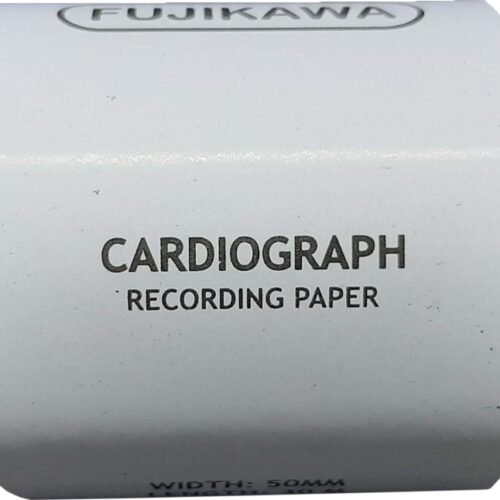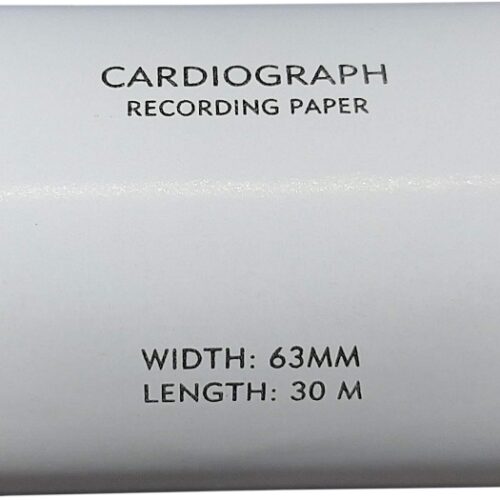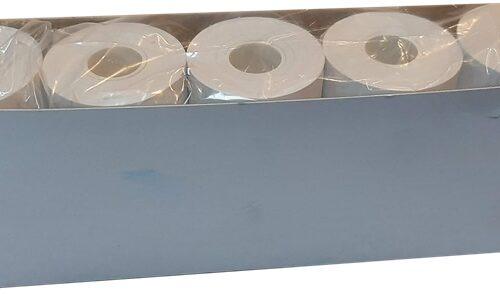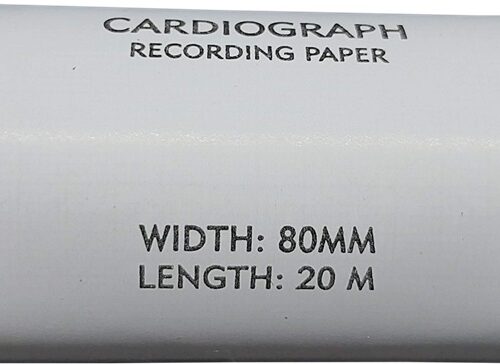Showing 97–112 of 444 results
-
ECG Thermal Paper 50mm x 30mm
0₱59.00> Fujikawa
> Cardiograph Recording paper
> Size
> 50x30m
> 1 RollMost of the diagnostic information in the cardiograph channel comes from the baseline rise. Because the rise in the diastolic tips during sympathetic nervous system arousal captures both the baseline rise and the reduction of pulse amplitude, they are used as the preferred reference points for measurement.
-
ECG Thermal Paper 63mm x 30mm
0₱84.00> Partners
> ECG Paper
> Per Roll
> Use to Measure the Electrical Activity Conduction of the Heart
> Size
> 63mm x 30mm 1 RollThe Ecg Paper The electrocardiogram (ECG or EKG) is used to measure the electrical activity and conduction of the heart. When electrical depolarization of the heart muscles occur, the cardiac muscles contract. This electrical depolarization (electrical activity) is amplified and recorded for analysis.
-
ECG Thermal Paper 63mm x 30mm
0₱83.00>WINGUARD
> ECG Paper
> Per Roll
> Use to Measure the Electrical Activity Conduction of the Heart
> Size
> 63mm x 30mm 10 RollsThe Ecg Paper The electrocardiogram (ECG or EKG) is used to measure the electrical activity and conduction of the heart. When electrical depolarization of the heart muscles occur, the cardiac muscles contract. This electrical depolarization (electrical activity) is amplified and recorded for analysis.
-
ECG Thermal Paper 63mm x 30mm
0₱96.00> Fujikawa
> Cardiograph Recording paper
> Size
> 63x30m
> 1 RollMost of the diagnostic information in the cardiograph channel comes from the baseline rise. Because the rise in the diastolic tips during sympathetic nervous system arousal captures both the baseline rise and the reduction of pulse amplitude, they are used as the preferred reference points for measurement.
-
ECG Thermal Paper 63mm x 30mm, 4 Rolls
0₱366.00> Fujikawa
> Cardiograph Recording paper
> Size
> 63x30m
> 4 RollMost of the diagnostic information in the cardiograph channel comes from the baseline rise. Because the rise in the diastolic tips during sympathetic nervous system arousal captures both the baseline rise and the reduction of pulse amplitude, they are used as the preferred reference points for measurement.
-
ECG Thermal Paper 80mm x 20mm
0₱87.00> Partners
> ECG Paper
> Per Roll
> Use to Measure the Electrical Activity Conduction of the Heart
> Size
> 80mm x 20mm 1 RollThe Ecg Paper The electrocardiogram (ECG or EKG) is used to measure the electrical activity and conduction of the heart. When electrical depolarization of the heart muscles occur, the cardiac muscles contract. This electrical depolarization (electrical activity) is amplified and recorded for analysis.
-
ECG Thermal Paper 80mm x 20mm
0₱86.00> WINGUARD
> ECG Paper
> Per Roll
> Use to Measure the Electrical Activity Conduction of the Heart
> Size
> 80mm x 20mm 5 RollsThe Ecg Paper The electrocardiogram (ECG or EKG) is used to measure the electrical activity and conduction of the heart. When electrical depolarization of the heart muscles occur, the cardiac muscles contract. This electrical depolarization (electrical activity) is amplified and recorded for analysis.
-
ECG Thermal Paper 80mm x 20mm
0₱133.00> Fujikawa
> Cardiograph Recording paper
> Size
> 80x20m
> 1 RollMost of the diagnostic information in the cardiograph channel comes from the baseline rise. Because the rise in the diastolic tips during sympathetic nervous system arousal captures both the baseline rise and the reduction of pulse amplitude, they are used as the preferred reference points for measurement.
-
ECG Thermal Paper 80mm x 20mm, 5Rolls
0₱410.00> Partners
> ECG Paper
> Per Roll
> Use to Measure the Electrical Activity Conduction of the Heart
> Size
> 80mm x 20mm 5 RollsThe Ecg Paper The electrocardiogram (ECG or EKG) is used to measure the electrical activity and conduction of the heart. When electrical depolarization of the heart muscles occur, the cardiac muscles contract. This electrical depolarization (electrical activity) is amplified and recorded for analysis.
-
ECG Thermal Paper 80mm x 20mm, 5Rolls
0₱630.00> Fujikawa
> Cardiograph Recording paper
> Size
> 80x20m
> 2 RollMost of the diagnostic information in the cardiograph channel comes from the baseline rise. Because the rise in the diastolic tips during sympathetic nervous system arousal captures both the baseline rise and the reduction of pulse amplitude, they are used as the preferred reference points for measurement.
-
-
-
-
-











